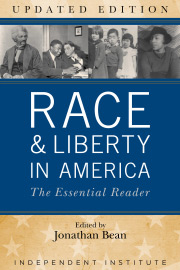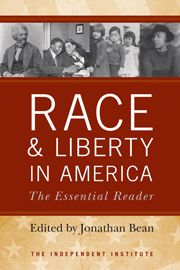Fifty years ago, on a hot August day in the Watts district of Los Angeles, a white police officer pulled over a black motorist for drunk driving. That encounter sparked a riot that lasted five days and resulted in the destruction of 600 stores and over thirty deaths. Watts was the first major riot in the era of televised news; the nation was transfixed and wanted to know why blacks were rioting in what became known as the “looter’s playground.”
The political and media elite explained the “root cause” of the Watts unrest as black protest against “the system.” This became the standard explanation for three hundred riots that broke out in cities nationwide during the “long, hot summers” of 1965 to 1968. This script was replayed to explain the Rodney King riots in 1992 and more recent disturbances in Ferguson, Missouri, and Baltimore, Maryland.
In truth, the so-called “rebellions” were opportunistic free-for-alls, carried out “mainly for fun and profit,” as political scientist Edward Banfield aptly put it. Rioters sacked thousands of small businesses, regardless of the owner’s race. In Detroit, nearly half the 2,500 businesses looted were owned by blacks. The primary targets indicated a desire for quick gain: pharmacies, liquor stores, and pawn shops.
The Watts riot and all that followed were studied in depth by pollsters who interviewed residents. Polling data supported the “looting for profit” explanation rather than the liberal “protest” thesis. First, the rioters were a small percentage of black residents. Survey takers in Watts found that the rioting was condemned by nearly everyone, according to a Social Science Quarterly survey and a collection of polls gathered in Public Opinion Quarterly. When asked: “What did you like about what was going on?” two-thirds of black residents replied, “Nothing.” Blacks surveyed by Harris agreed that “looters steal property and are criminals.” All of this fit the “rioting for fun and profit” thesis; yet, then and now, few civic leaders offered this as an explanation.
Few blacks polled in Los Angeles believed that police brutality was the cause of the riot, according to the Social Science Quarterly poll. Moreover, city officials ordered the police to stand down during riots. In 1968, Business Week characterized the attitude of city leaders as “it is better to let them loot than shoot.” Cops stood in department stores watching as looters ran out with merchandise.
This hesitation to use force was partly due to a lack of riot control training. But it was also a reluctance to shoot black looters. Two years prior to Watts, white Americans watched with jaws open as police in Birmingham, Alabama, ordered dogs and fire hoses against non-violent teen-age demonstrators. Black action was synonymous with righteous protest.
By 1968, it was clear that government was abandoning small business owners to their fate. Shopkeepers demanded compensation for their losses. They never got it. Even worse, the records they needed for disaster loans often went up in the smoke of the arsonist’s fire.
The riots ended suddenly after the summer of 1968. Nearly every inner-city business district had been looted and burned to the ground; there was nothing left to loot.
If the rioting was opportunistic— and it was— then civic leaders had a responsibility to preserve order. However, they felt constrained by the presumed innocence of black behavior on the streets. In 1965, liberal guilt was understandable, if not excusable. Yet one half-century later the policy is the same: police ordered to stand down during the riots of 1992 (Los Angeles) and 2015 (Baltimore).
With public criticism of police militarization, perhaps it is too much to expect civic leaders to order arrests of looters, any more than city leaders did in the past. But they can abandon the time-worn protest ideology of the 1960s. Looting is not an act of political protest. Rioters do not represent their communities. If residents had taken a vote in 1965, there would have been no looting.
If city leaders “let them loot,” restitution is due small business owners victimized by the state-condoned violence. “Mom and Pop” retailers are the real victims of riots. That was true in 1965, it is equally true fifty years later.









